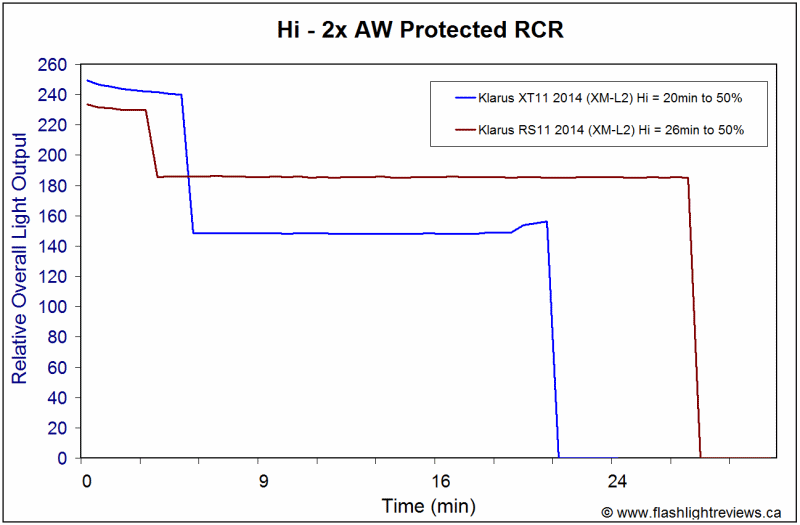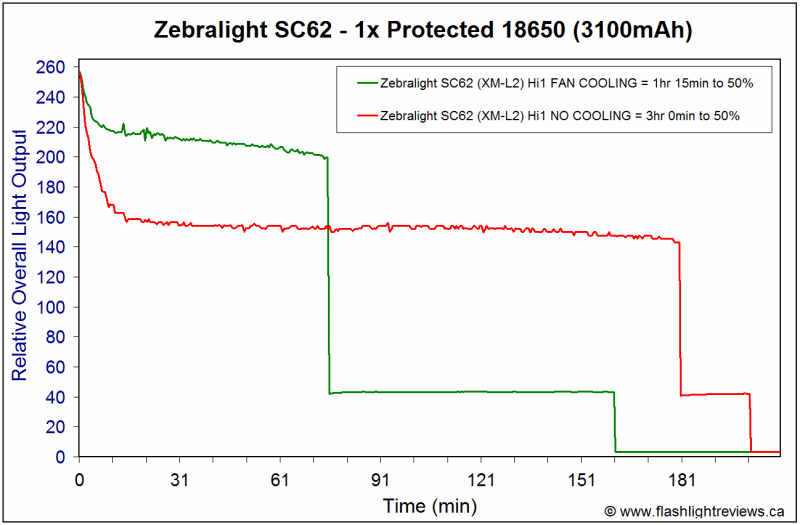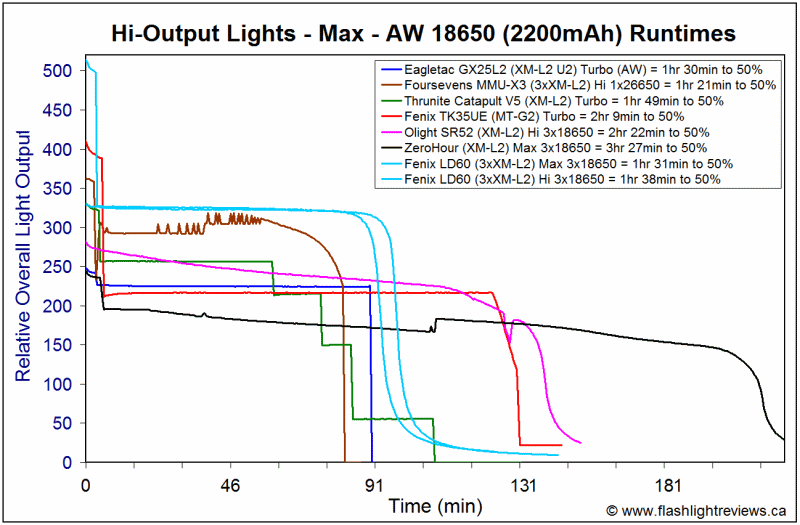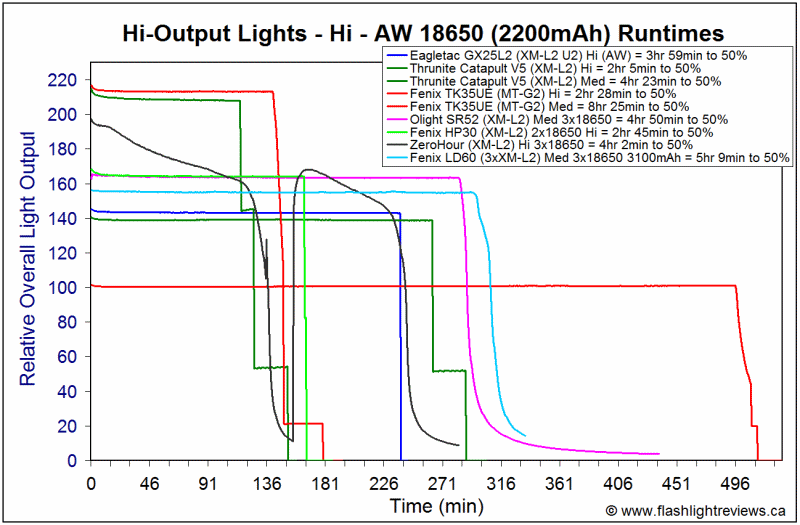Thanks for the graphs/charts, that clarify's the picture I was getting from the explanations. Regulation is possible, but at a lower than maximum output. Essentially, from the lowest output the cell in use can maintain for it's duration. That is good for an EDC like maybe my EagTac TX25C2 or my new little Sunwayman C20C (which now has an LD1 driver by the way)
Point being that the regulation works well in a relatively low powered light unless there is a massive power supply available. Perhaps this is what the Fenix TK61/TK75 accomplish with the 4 cell carrier and 4 cell extension tube?
On a rare occasion, I recognize a fine effort and don't modify a light. The EagTac TX25C2 is one of those, as is my little Xeno EO3 V3. I did put a higher grade emitter in the Xeno, but didn't change the driver. Same for the EagTac, it has an XP-L V4 3D now. (Dang! I hadn't thought of putting an XP-L in the Xeno! Woot!) :) I had sworn I was going to leave the Fenix TK22 alone, sweet little light. But the LD-1 needed a home and I liked the dual switch option of the TK22, so, well, I caved.
I see the point though, thanks guys for the insights. Now if we can only get a light doing full regulation at 5A...
Edit: No intention of de-railing the thread or anything, but had to share the specs on the little Xeno EO3 V3... very interesting little light, especially the part about "any AA battery"! So is this the kind of circuitry y'all are talking about?
Notice how they missed it on the mode selection...starts on Low, next up is Ultra Low, then BAM straight into High! lol Just goes to show, the Leatherman rule is present in all walks of life. Give em some of what they want, but never ALL of what they ask for.
This 220 lumen light will run on high output for over an hour on one AA battery. Also has SOS and strobe functions.
Any AA battery, no pocket clip, click tailcap, finger groove style body, glow in the dark switch boot, stainless steel bezel ring, lanyard, 220 Lumens.
- Low (350mA/110lms/2hrs)
- Ultra Low (150mA/50lms/5hrs)
- High (800mA/220lms/1hr)
- CREE high power LED, XP-G series
- Rated input of LED driver: DC 0.8~3.7V
- Battery (not included)
- Uses AA size battery - dry cell, Alkaline, Ni-Cd, Ni-MH, 14500 Li-ion, or LiFePO4
- XENO HDE engine
- Real linear LED driver, developed and made by XENO
- Non-flickering and absolutely noiseless even at utra-low levels
- XENO unique Quiet RSL™ technology
- XENO unique GFC (Gamble Free Concept) impact-resistant technology
- Built in battery inverted load protection
- 3-stage variable output: low, ultra low, high
- The low output level is always the start mode after 3 seconds of power off
- Max output: 220 lms
- Max burn time: 20 hours
- Normal anodized Al-alloy construction
- GITD (glow-in-the-dark) SIR (silicone rubber) tail cap and O-ring under lens
- Water proof: IPX-8; 10 meters dunk resistance
![]()




